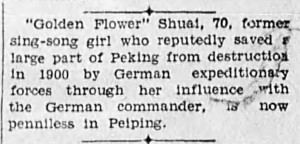Posted: August 2nd, 2015 | No Comments »
Here’s an anecdote from 1924 about the day the American novelist Peter B Kyne (below – a now largely forgotten, but once very popular author, whose books were the basis for many silent movies), his wife Helen and their friend Carl Crow (resident of course in Shanghai) visited the battlefield at Lieuko. It seems to have been rather an exciting day…this tendency for foreigners to take a drive out to battlefields was a long established one with people visiting Taiping battles right through to watching the Chinese fight the Japanese after 1937. What on earth the combatants thought of these foreigners wandering through their battlefields is not recorded!!


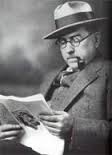
Posted: August 1st, 2015 | No Comments »
Franco David Macri’s Clash of Empires in South China looks at the effects on the wider fronts of the Japanese onslaught on the British Empire, especially Hong Kong, and the Soviet Union…
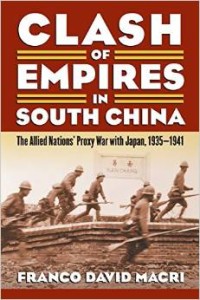
Japan’s invasion of China in 1937 saw most major campaigns north of the Yangtze River, where Chinese industry was concentrated. The southern theater proved a more difficult challenge for Japan because of its enormous size, diverse terrain, and poor infrastructure, but Generalissimo Chiang Kai-shek made a formidable stand that produced a veritable quagmire for a superior opponent–a stalemate much desired by the Allied nations. In the first book to cover this southern theater in detail, David Macri closely examines strategic decisions, campaigns, and operations and shows how they affected Allied grand strategy. Drawing on documents of U.S. and British officials, he reveals for the first time how the Sino-Japanese War served as a “proxy war” for the Allies: by keeping Japan’s military resources focused on southern China, they hoped to keep the enemy bogged down in a war of attrition that would prevent them from breaching British and Soviet territory. While the most immediate concern was preserving Siberia and its vast resources from invasion, Macri identifies Hong Kong as the keystone in that proxy war-vital in sustaining Chinese resistance against Japan as it provided the logistical interface between the outside world and battles in Hunan and Kwangtung provinces; a situation that emerged because of its vital rail connection to the city of Changsha. He describes the development of Anglo-Japanese low-intensity conflict at Hong Kong; he then explains the geopolitical significance of Hong Kong and southern China for the period following the German invasion of the Soviet Union. Opening a new window on this rarely studied theater, Macri underscores China’s symbolic importance for the Allies, depicting them as unequal partners who fought the Japanese for entirely different reasons-China for restoration of its national sovereignty, the Allies to keep the Japanese preoccupied. And by aiding China’s wartime efforts, the Allies further hoped to undermine Japanese propaganda designed to expel Western powers from its Greater East Asia Co-Prosperity Sphere. As Macri shows, Hong Kong was not just a sleepy British Colonial outpost on the fringes of the empire but an essential logistical component of the war, and to fully understand broader events Hong Kong must be viewed together with southern China as a single military zone. His account of that forgotten fight is a pioneering work that provides new insight into the origins of the Pacific War.
Posted: July 31st, 2015 | No Comments »
Penguin paperbacks are 80 years old this week. They were revolutionary – though Allen Lane himself admitted there were antecedents (see my post on Albatross Books and Ella Maillart here).
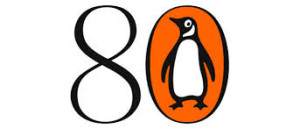
The anniversary reminded me that as a kid I used to read my parents old Ernest Bramah Penguins on rainy days. Braham wrote the Kai Lung series, the fictional meanderings of a Chinese itinerant storyteller. I thought these fantastic at the time though today they are tricky to reread and a bit superfluous. They were pure chinoiserie – Bramah never ventured beyond Europe and certainly never to China. That’s OK – many others didn’t too, though Bramah’s Kai Lung stories never quite achieve either the surface charm or the underlying hard edge of Thomas Burke’s Limehouse Chinatown stories that were published slightly later. Bramah, after being rejected by many publishers, finally got Kai Lung into print in 1900. Still, to a young me, there were many wondrous sentences in Kai Lung – “He who lacks a single tael sees many bargains”; “It is a mark of insincerity of purpose to spend one’s time in looking for the sacred Emperor in low-class teashops”. Kai Lung and Bramah, courtesy of Penguin paperback reissues in the 1930s, were staples of chinoiserie reading though today have been almost totally forgotten…



Posted: July 30th, 2015 | No Comments »
Ronald Taylor’s biography of Arthur May, the man who famously hoisted the Union Jack back up in Hong Kong in 1945 after the Japanese surrender, is long overdue and well worth a read….

Arthur May is best remembered for his daring feat of hoisting the Union Jack on Hong Kong’s Peak on 18th August 1945, three days after the Japanese surrender. A few days later he sailed to Macao in a sampan to seek approval from the British Government for Franklin Gimson, the senior British subject then in Hong Kong, to take over the administration of Hong Kong from the occupying Japanese forces. How had Arthur remained out of internment for the majority of the Japanese occupation of Hong Kong and what did he do during this time? Was the hoisting of the flag instrumental in reclaiming Hong Kong for the British? Was his trip to Macao necessary? While out of internment Arthur befriended some of the Indian soldiers, who had been coerced to become guards for the occupying Japanese forces in return for better conditions for themselves. This liaison continued and expanded into a spy network after Arthur’s internment. It later assisted in preventing looting and disorder as British authority was re-established following the Japanese surrender. Arthur died in early 2000 at the age of 92. During his latter years he talked and made notes on what he had done during the Japanese occupation. This is Arthur’s story based on contemporary records, his memory and his notes.
Posted: July 29th, 2015 | No Comments »
In 1921 Macy’s department store in New York ran a promotion on books dealing with “The Difficult Asiatic Question”. Now, while obviously we all still remember Carl Crow (who happens to be the bargain purchase on the list at just a buck 74) the other authors are a little less well remembered. Probably second most remembered is BL Putnam Weale (real name Bertram Lenox Simpson), a Brit who’s father had been in the Imperial Maritime Customs. Putnam Weale was extremely well known in the China Hand business in the early twentieth century and The Truth About China and Japan is still worth a glance.
for the record – Hyndman was a British socialist, well known before the First World War; Pooley was a writer on various Japanese-based English language newspapers; Clarke was an Irish-American journalist and fervent Irish nationalist (as was, coincidentally, Hyndman – at least as a Home Ruler) who had been inspired to write about Japan by his friendship with the Japanese chemist Jokiche Takamine (himself a graduate student of Glasgow University, like all the best people); Sherrill was an American diplomat and US member of the International Olympic Committee between the wars who was rather aggrieved at never being selected as US Ambassador to Tokyo.
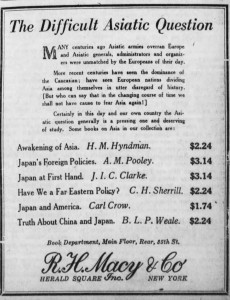
Posted: July 29th, 2015 | No Comments »
Here, from the Times of London, in 1889, a description of how beggars operated in Shanghai…
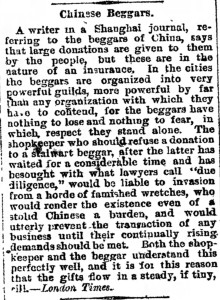
Posted: July 28th, 2015 | No Comments »
A new edited collection from Robert Bickers with plenty to interest all Chinarhymers I feel…..
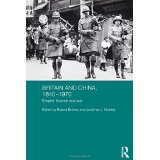
This book presents a range of new research on British-Chinese relations in the period from Britain’s first imperial intervention in China up to the 1960s. Topics covered include economic issues such as fi nance, investment and Chinese labour in British territories, questions of perceptions on both sides, such as British worries about, and exaggeration of, the ‘China threat’, including to India, and British aggression towards, and eventual withdrawal from, China.
Introduction 1. ‘The Usual Intercourse of Nations’: The British in Pre-Opium War Canton John M. Carroll 2. British Intervention in the Taiping Rebellion Stephen R. Platt 3. Britain and China, and India, 1830s-1947 Robert Bickers 4. The Interest of Our Colonies Seems to Have Been Largely Overlooked: Colonial Australia and Anglo-Chinese Relations Benjamin Mountford 5. ‘Coolies’ or ‘Huagong’? Conflicting British and Chinese attitudes towards Chinese contract workers in World War One France Paul J. Bailey 6. Sino-British Relations in Railway Construction: State, Imperialism and Local Elites, 1905-1911 Koji Hirata 7. Foreign investment in modern China: an analysis with a focus on British interests Chen Qianping 8. Curative Finance: Francis Aglen, Bond Markets, and the Early Republic, 1911-1928 Hans van de Ven 9. Expansion and Defence in the International Settlement at Shanghai Isabella Jackson 10. Nationalistic Enthusiasm versus Imperialist Sophistication: Britain from Chiang Kai-shek’s Perspective Sherman Lai 11. ‘Decolonisation’ in China, 1949-1959 Jonathan J. Howlett
Posted: July 28th, 2015 | No Comments »
According to this article, from 1936, a former sing-song girl of Peking known as “Golden Flower” Shuai who had thwarted the German soldiers in the city in the aftermath of the Boxer Rebellion was reported to be living penniless in the city. I know nothing of the story of Shuai – if anyone does please do elucidate me….??
